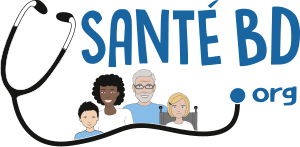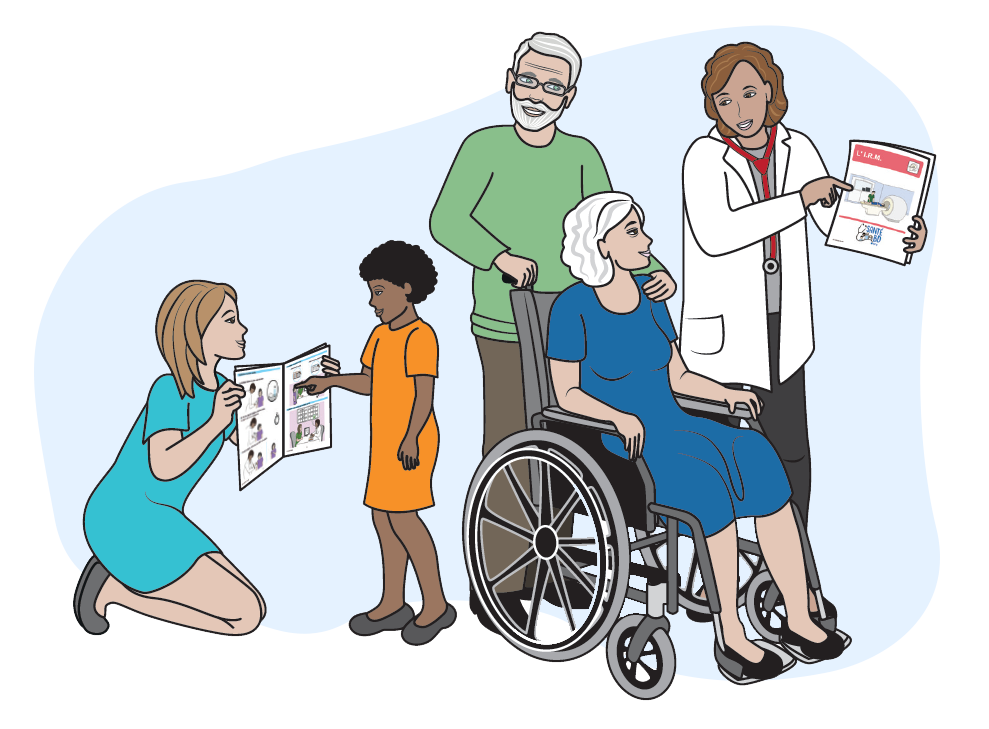Transcription textuelle de la BD I have an appointment at the dentist’s – The dental examination
Why do I need a dentist ?
To check that my mouth, teeth and gums are healthy.
To teach me the right way to brush my teeth.
To look after a tooth which is hurting.
To take out a tooth.
To replace a missing tooth.
To repair a broken tooth.
I have to go to the dentist at least twice a year.
I make the appointment even if my teeth don’t hurt.
What happens at the dentist’s ?
The dentist’s assistant welcomes me. She helps the dentist.
I go into the waiting room.
The dentist says hello.
I go into the surgery.
There are a X-ray machine Radio, a stool, a chair, a lamp, a cuspidor, a cup, a tablet and controls.
There’s a funny smell.
I sit down on the chair.
The dentist asks me some questions.
The dentist asks me:
- If I’m healthy.
- If I take any kind of medicine.
- What I eat.
- If I brush my teeth.
The assistant puts a napkin around my neck.
The person who came with me and the assistant can reassure me.
Hold my hand.
Talk to me.
The dentist explains what she is going to do.
The dentist asks me how I want to show if it hurts.
I can put up my hand.
I can make a noise.
I can squeeze the hand of the person who came with me.
The assistant turns the tablet so it’s above my knees.
The dentist shows me the instruments.
The dentist puts the chair back so I’m lying down.
A strong light shines in my mouth.
The dentist puts on gloves.
A mask.
And sometimes, big glasses too.
I have to open my mouth wide.
I have to keep my mouth open for a long time.
I mustn’t bite the dentist.
To help me, the dentist can put a little foam wedge in my mouth.
I must not to move my head.
I can’t swallow my saliva.
The dentist puts a little tube in my mouth to stuck out the saliva.
The tube makes noise.
The dentist looks for holes in my teeth.
A hole in a tooth is called a cavity.
The dentist can use an air nozzle to dry my teeth.
It blows air and makes a noise !
Sometimes the dentist takes an x-ray of a tooth.
She puts a little plate in my mouth.
I hold the plate with my finger.
If I can’t do it, the person who came with me does it for me.
The dentist puts a sort of tube near my cheek.
I have to keep absolutely still !
The dentist takes the x-ray.
It’s very quick and it doesn’t hurt.
The dentist looks at the x-ray of my tooth on the computer.
Sometimes the dentist takes a panoramic x-ray.
That’s an x-ray of all my teeth.
I go into the x-ray room.
I stand in front of the machine.
I grip the plastic tube with my teeth.
The assistant wedges my head with two plates so I can’t move it.
I must stay absolutely still !
The assistant leaves the room : I’m all alone.
The machine goes around my head and makes a lot of noise.
It’s over!
So, there are several cases. Either:
Everything is ok.
I continue to brush my teeth after each meal.
I’ll come back again in 6 months to check that everything is still ok.
I have tartar on my teeth.
See booklet « The dentist descales my teeth. »
I have a cavity.
See booklet « The dentist looks after a cavity ».
I have to have a tooth replaced.
See booklet « The dentist will put a crown in ».
I have to have a tooth taken out.
See booklet « The dentist takes a tooth out ».
The translation of this tool was made possible thanks to the support of the Orange Foundation.
Where I can find SantéBD booklets?
- On the internet: Visit the website: www.santebd.org
- On the SantéBD Channel Youtube
SantéBD booklets are free.
SantéBD is a project by the NGO Coactis Santé contact@santebd.org
SantéBD booklets are produced in partnership with different participants from the world of healthcare and working with disabilities. Illustrations by Frédérique Mercier.
Copyright Coactis Santé
The creation of this tool was made possible with the support of:
- la Fondation Handicap Malakoff Humanis
- la Fondation de France
- la mairie de Paris
- l’Assurance maladie
- la Caisse nationale de solidarité pour l’autonomie
- Santé publique France
This document was proofread by people with learning disabilities and respects the European Easy-to-Read Guidelines. These guidelines help to make information available for everyone.
For more information visit the website https://www.inclusion-europe.eu/easy-to-read/





